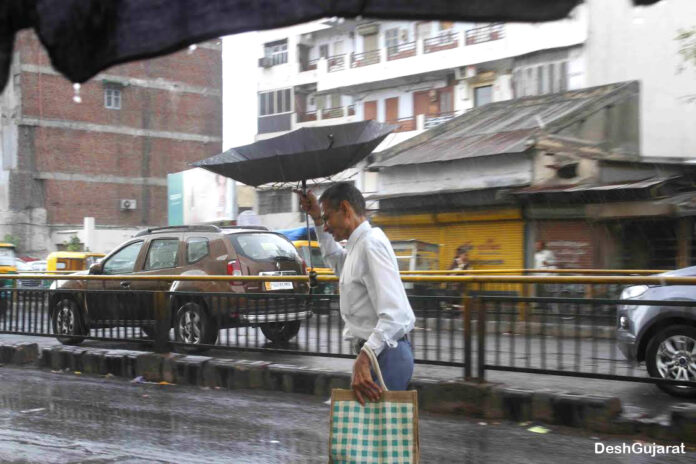In what seems to be a relentless onslaught of the monsoon, the picturesque city of Junagadh in Gujarat has been grappling with heavy rainfall, causing widespread inundation and disruptions in daily life. Popular tourist destinations, Girnar and Bhavnath, have borne the brunt of this deluge, experiencing record-breaking rainfall that has led to concerns about the safety of residents and visitors alike.
The monsoon season is a much-awaited event in Gujarat, bringing relief from scorching temperatures and replenishing water resources in the region. However, this year’s monsoon has been exceptionally intense, surpassing historical averages and leading to severe consequences.
As per official reports from the meteorological department, Junagadh has received an alarming 24-hour precipitation of over 350mm. This relentless downpour has triggered flooding in low-lying areas, causing significant damage to homes, roads, and agricultural fields. Local authorities have been working tirelessly to rescue stranded individuals and provide relief to those affected by the floods.
Girnar and Bhavnath, both renowned for their spiritual significance and picturesque beauty, have faced unprecedented rainfall, with the regions receiving over 400mm of rain within a 24-hour period. This extreme weather event has raised concerns about the structural integrity of ancient temples and monuments in these areas. The local administration has mobilized efforts to safeguard the cultural heritage sites and ensure the safety of tourists and pilgrims.
Transportation has been severely disrupted due to the incessant rainfall and flooding. Roads have been submerged, cutting off several remote villages from the rest of the city. The railway tracks have also been affected, leading to the suspension of train services in the region.
Authorities have issued warnings to residents and tourists to exercise caution and avoid venturing into risky areas during this crisis. Emergency response teams, along with the National Disaster Response Force (NDRF), have been deployed to conduct rescue operations and provide aid to those affected.
In light of the situation, the Gujarat state government has announced relief measures for the affected population, including temporary shelters, food supplies, and medical assistance. Additionally, helpline numbers have been set up to streamline communication and coordinate rescue efforts effectively.
The unprecedented rainfall in Junagadh and its famous landmarks, Girnar and Bhavnath, serves as a stark reminder of the increasing challenges posed by climate change. Climate scientists have long warned about the intensification of extreme weather events, and these recent floods in Gujarat echo those concerns.
As the city and its surroundings continue to grapple with the aftermath of this deluge, it becomes essential for both the government and citizens to prioritize disaster preparedness and adopt sustainable practices that mitigate the impact of climate change. The need for efficient drainage systems, early warning systems, and infrastructure resilience cannot be emphasized enough to safeguard lives and property during such calamities.
As the monsoon season progresses, the authorities are keeping a close eye on weather developments and providing regular updates to the public. The collective efforts of the administration, relief organizations, and community support are crucial in navigating through these challenging times and rebuilding the affected areas stronger and more resilient than before.
The heavy rains in Junagadh, Gujarat, have caused significant disruptions and damages, especially in the revered regions of Girnar and Bhavnath. The priority now lies in immediate relief and rehabilitation efforts, while also acknowledging the long-term necessity to address climate change and its impact on vulnerable regions like Gujarat.

